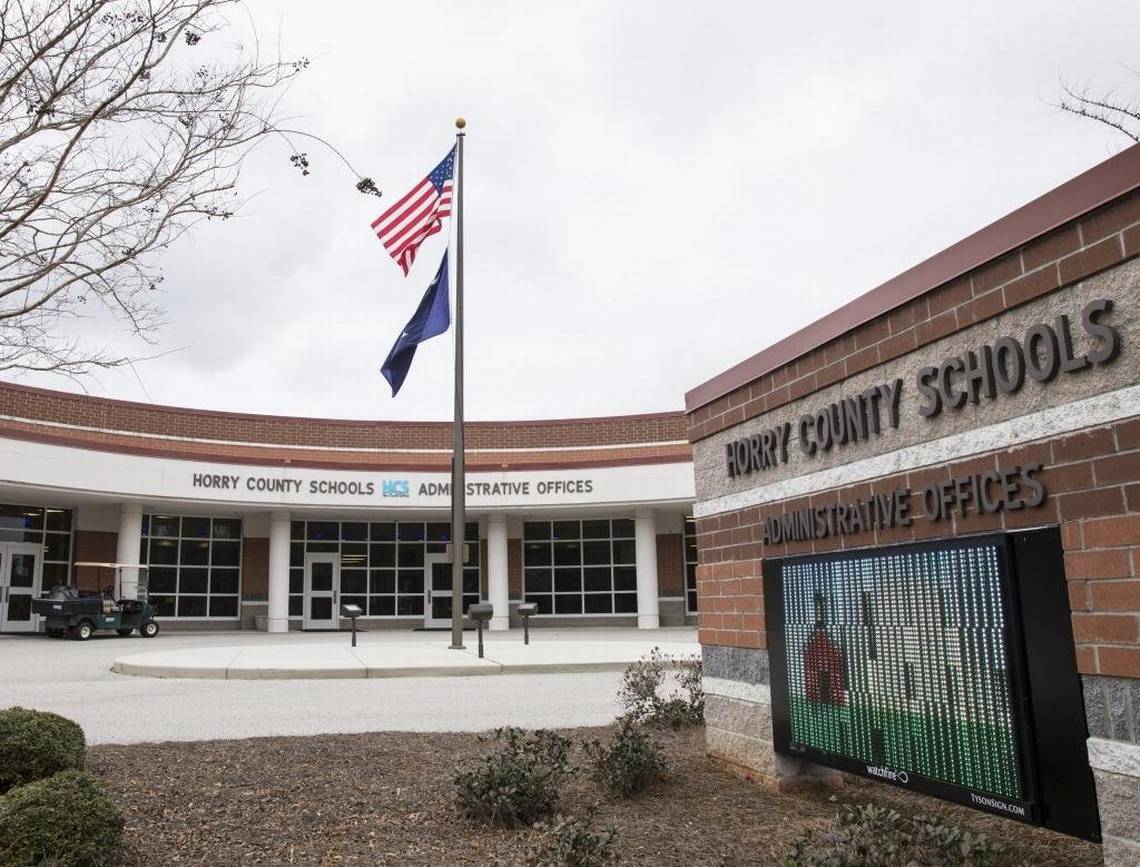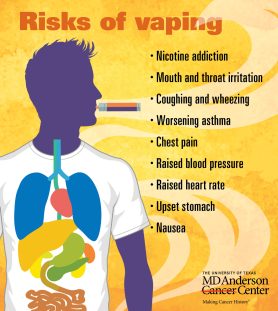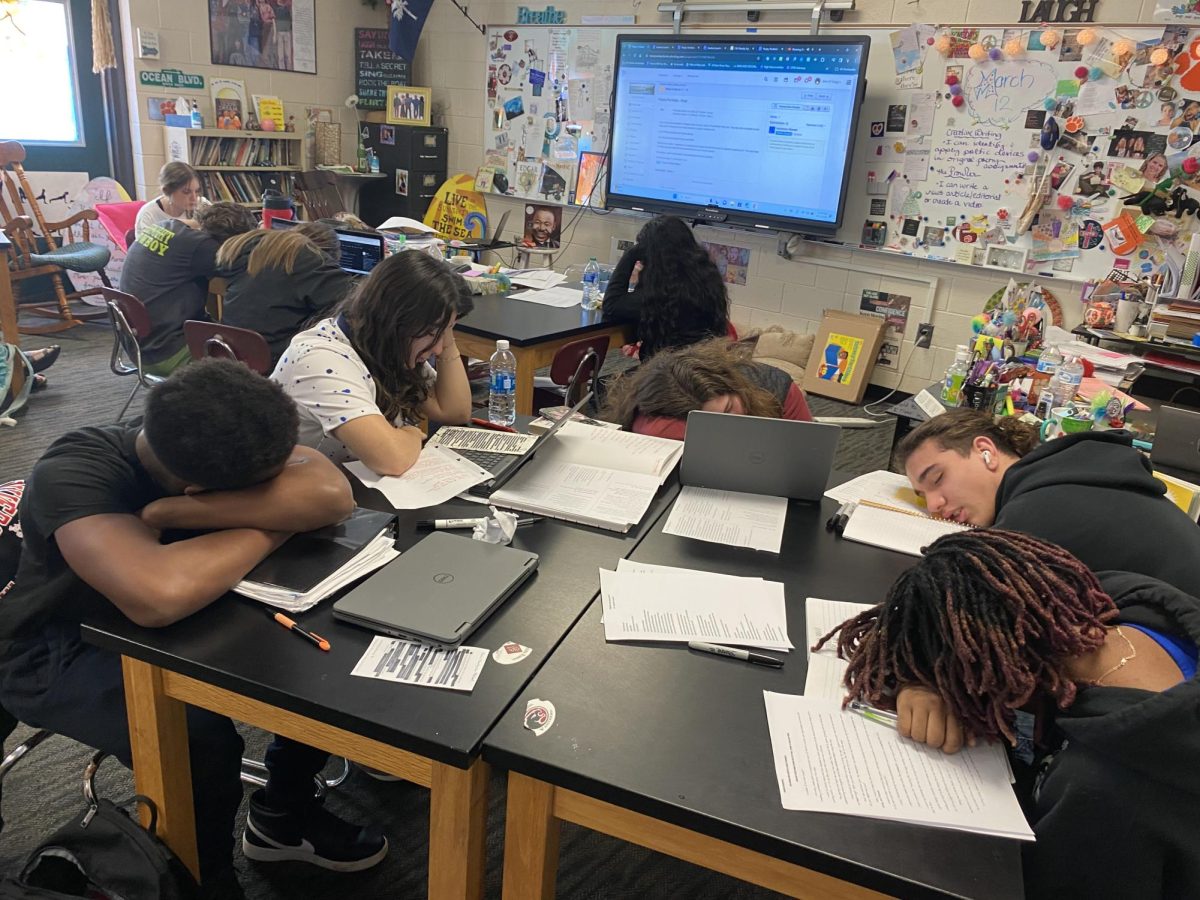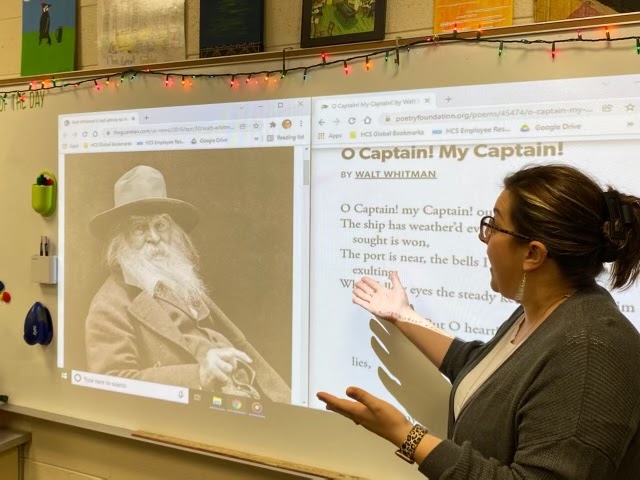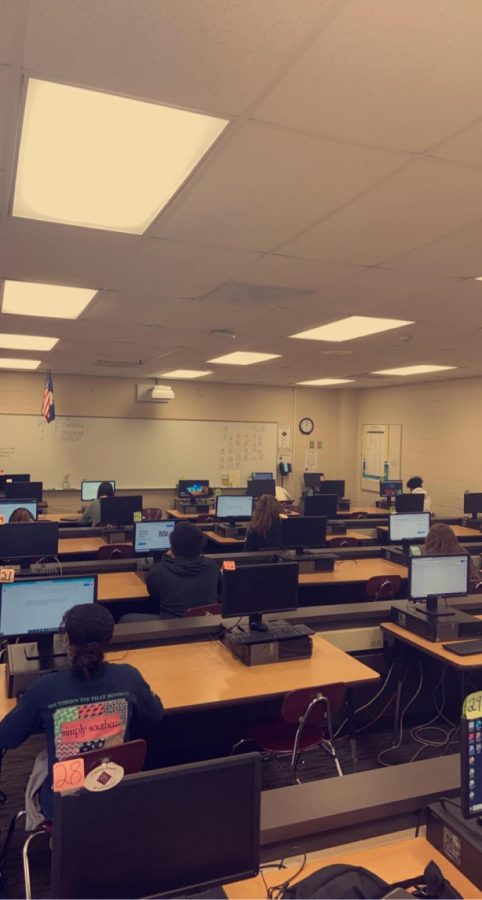Virtual Schooling and Anxiety
March 3, 2021
As we all figure out how to navigate these unprecedented times that we live in, there comes a lot of change involved with how we handle life. One of the many changes that had to be made as students are adjusting to the hybrid schedule, as well as making a decision to go virtual for all classes.
With these changes comes many benefits and also many drawbacks to students’ education and mental health. While hybrid learning and online learning comes with many benefits that can improve our lives, such as extra time to do activities that we enjoy. It also comes with the challenge of learning to manage your time properly.
Online learning has taken a mental toll on many students. Anxiety levels are rising with students who are participating in online and hybrid learning due to many of these things. Learning how to cope with these issues of anxiety and even depression can be hard for many students during this model of learning. Many students feel anxious being alone doing their work, overwhelmed with the assignments all online, and the lack of social interaction with other peers. Many students have trouble juggling three days of virtual classes and completing their assignments on time.
Katlyn Carroll, a CFHS teacher says, “There are so many unknowns nowadays, especially in school, which used to be a lot of students’ safe place. The worry about what will take place from week to week or even day to day, can cause anxiety to escalate very quickly. It is important for students, as well as staff, to be aware of what the unknown and constant shifting can do to students mentally throughout this time. Stress/anxiety and depression are very real issues that need to be addressed and handled carefully, for our students during this time of unknown chaos.”While we are supposed to be in school for seven hours on a virtual day as well, many students find it difficult to concentrate with many distractions.
Carly Schook, junior, shares, “Teachers need be patient because students often have other things going on during the virtual learning.”
According to Pew Research Center, 61% of teens are under a lot of pressure to produce good grades. It is twice as high as the percentage of students who feel pressured to fit in socially or try to look better. Online school and the hybrid model contributes to this because the change in the traditional school system has now shifted to learning how to keep exceptional grades while participating in a completely new form of learning.
Another research study done by LSWest Online found that on a 10-point scale, American teens have rated their stress level at an average score of 5.8, compared to normal values of 3.8. Anxiety levels have a direct correlation with the way students have to do school now during the pandemic. Many friends and family members are starting to be affected more as this continues to be everyday life.
After surveying 35 CFHS students and asking them to share their stress level on a scale of 1-10 (highest), the average was seven and a half. Many of them responded that their stress levels have risen significantly since the start of the pandemic a year ago.
CFHS is projected to be back to five days a week sometime in mid-March, depending upon the completion of the mandated plexiglass installation. It will be interesting to see how the stress and anxiety in students change after this happens. Hopefully, our stressors will decrease, and we will have a more positive outlook about everyday life.














